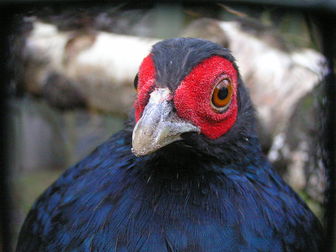Salvadori's Pheasant
This species is classified as vulnerable. In Kerinci Seblat National Park numbers are reducing due to heavy trapping and hunting by local people for food.

Original source: frank woutersPermission(Reusing this file)This image, which was originally posted to Flickr.com, was uploaded to Commons using Flickr upload bot on 20:19, 9 March 2008 (UTC) by Ltshears (talk). On that date it was licensed under the license below.This file is licensed under the Creative Commons Attribution 2.0 Generic license.You are free:to share – to copy, distribute and transmit the work
Author: frank woutersPermission(Reusing this file)This image, which was originally posted to Flickr.com, was uploaded to Commons using Flickr upload bot on 20:19, 9 March 2008 (UTC) by Ltshears (talk). On that date it was licensed under the license below.This file is licensed under the Creative Commons Attribution 2.0 Generic license.You are free:to share – to copy, distribute and transmit the work
The Salvadori's Pheasant is classified as Vulnerable (VU), considered to be facing a high risk of extinction in the wild.
Male Salvadori's Pheasant at the Bronx Zoo Conservation status Vulnerable (IUCN 3. More
Salvadori's PheasantSalvadori's Pheasant (Lophura inornata) is native to Indonesia. It is found in the mountain rainforests of Sumatra, thus it is also known as the "Sumatran Pheasant." The species name "inornata" means "without ornament." This species is classified as vulnerable. In Kerinci Seblat National Park numbers are reducing due to heavy trapping and hunting by local people for food. This bird is named after Italian ornithologist Tommaso Salvadori. More
Family : Phasianidae
Genus : Lophura
Species : inornata
Authority : (Salvadori, 1879)
